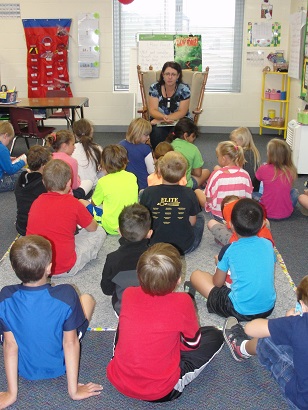Teaching Into the Strategy of Inferring
Join Our Community
Access this resource now. Get up to three resources every month for free.
Choose from thousands of articles, lessons, guides, videos, and printables.
Skilled readers use a variety of strategies as they read and comprehend text. They also know how to monitor their comprehension and work to clarify confusions when they occur. Teaching students to be skilled readers involves the gradual release process. This includes introducing a variety of reading strategies, demonstrating how capable readers use these strategies, and then providing time for students to engage with each strategy, transitioning from guided to independent practice. This process allows teachers to slowly withdraw support as students show they are able to successfully use strategies during independent reading.
Often when introducing strategies, we use Ready Reference Guides to guide our instruction and a supporting text to model the strategy with students. However, it is important to remember that when using the gradual release process, we must first find students' entry point and move forward from that place, and that doesn’t always mean starting with a text. Is this their first exposure to the strategy? What background information is needed for understanding its purpose? What preteaching needs to be done before I model it during a class read-aloud?
I witnessed an excellent example of this in a third-grade classroom I was visiting. The teacher was introducing inferring to students and used her focus lesson to build background knowledge, understanding, and purpose. It was a brief lesson, her students were engaged, and at the end they had a better understanding of the purpose of inferring when reading a text.
During her eight-minute lesson, the teacher brought in a small grocery sack containing a few items and told the class that new neighbors had recently moved in next door to her. This small bag of trash had blown from their yard to her yard, and she had taken it to see if she could find out more about them. She then proceeded to pull items out of the bag and thought aloud about each one, modeling the strategy of inferring to her class and then allowing them to try it on their own.
This bag contains a ticket stub to a local movie. It is a children’s movie and it's a cartoon, so I bet they have small children.
I also see a wrapper from a granola bar, an empty container of an energy drink, and some sports chews. I always take those with me when I go to the gym. I bet they belong to a gym, too.
I also see an empty box of dog bones. They are the large ones. What inference can you make? Tell your partner what you are thinking.
After going through seven or eight items and having a short discussion about each one, she closed the lesson with a summary of the importance of inferring and how we use this strategy frequently in our lives. She built prior knowledge and understanding of what it means to infer. The next day she built on their understanding by modeling inferring when reading.
Through planning, this teacher found her students’ entry point and built their prior knowledge. She taught into the strategy, creating a deeper level of understanding so students could continue to learn and practice its use.






